FLYING REPTILES?
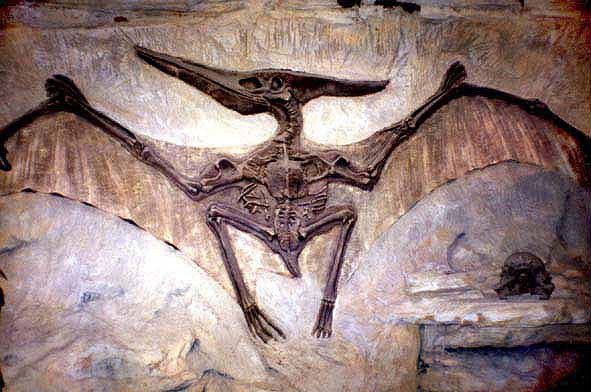
FLYING REPTILE or PTEROSAUR PICTOGRAPH? Black Dragon Wash is located just 12 miles west of Green River, Utah, right off Interstate 70 . Pastor Kirk Dunham from Green River Bible Church, escorted Discovery News Editor, Chuck Anderson, and his wife JoEllen to the unique native pictograph that would appear to be a flying reptile or Pterosaur. The site is marked by a parking area and split-log fence. You can walk right up to the pictographs which have been remarkably preserved. Notice the long tail and reptile-like head!
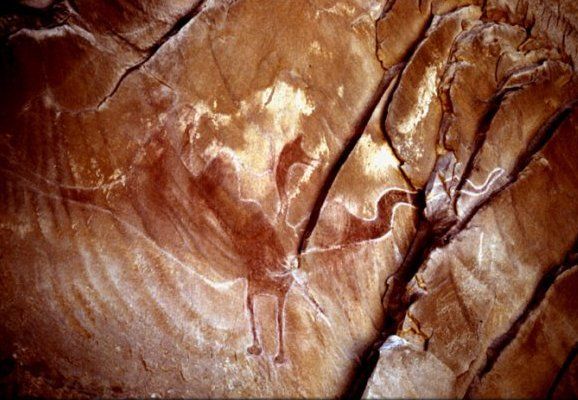
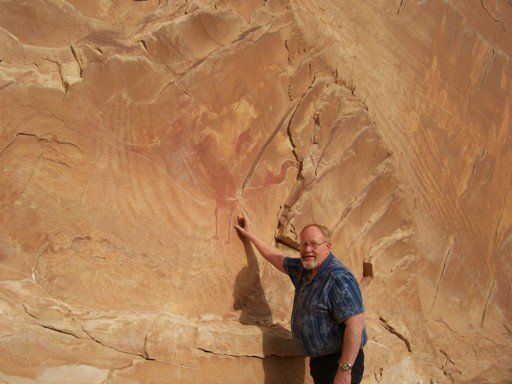
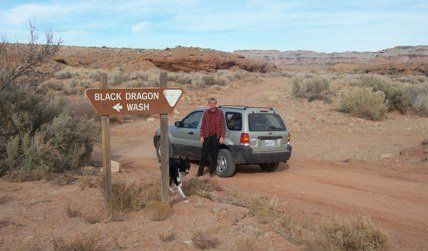
SIGHTINGS OF STRANGE FLYING CREATURES: A gigantic bird-like creature was reported as sighted in Pennsylvania. On the evening of Tuesday, September 25, 2001. A 19-year-old claimed to have seen an enormous winged creature flying over Route 119 in South Greensburg, Pennsylvania. The witness’s attention was drawn to the sky by a sound that resembled “flags flapping in a thunderstorm.” Looking up, the witness saw what appeared to be a bird that had a wingspan of an estimated 10 to 15 feet and a head about three feet long.
This is the most recent sighting of an incredible creature – most often considered a myth – known as a “Thunderbird.” Sightings of these gigantic birds, apparently unknown to science, go back hundreds of years and are a part of many Native American legends and traditions.
They have even been blamed for abducting, or attempting to abduct, small children. And now, according to various reports, they appear to be soaring through the skies of Pennsylvania.
On September 25, the witness told researcher Dennis Smeltzer, that the huge black or grayish-brown bird passed overhead at about 50 to 60 feet. “I wouldn’t say it was flapping its wings gracefully,” the witness told Smeltzer, “but almost horrifically flapping its wings very slowly, then glided above the passing big rig trucks.”
The witness observed the creature for about 90 seconds in total, even seeing it land on the branches of a dead tree, which nearly broke under its great weight. Unfortunately, no other witnesses saw the bird on this date and no tangible evidence could be found for the bird after the site was searched.
What makes this story more interesting, however – even plausible – is that other sightings of similar description were reported in Pennsylvania in June and July, 2001.
On June 13, a resident of Greenville, Pa. was startled by the great size of the grayish- black creature seen soaring overhead, at first thinking it was a small airplane or ultralight aircraft! This witness observed the bird for at least 20 minutes, clearly seeing its fully feathered body and confidently estimating its wingspan to be about 15 feet and its body length at about 5 feet. This bird, too, was seen to perch on a tree for at least 15 minutes before taking to air again and flying off toward the south. A neighbor of this witness claimed to have seen the creature the next day, describing it as “the biggest bird I ever saw.”
Less than a month later, on July 6, a witness in Erie County, Pa. reported a very similar sighting, according to an item in Fortean Times magazine. Again, the creature’s wingspan was estimated to be 15 to 17 feet and was described as “dark gray with little or no neck, and a circle of black under its head. Its beak was very thin and long – about a foot in length.”
These were not the first sightings of Thunderbirds in Pennsylvania, as you’ll read later in this article. And if these reports are accurate, these birds are the largest flying creatures not yet identified by science. By comparison, the largest known bird is the wandering albatross with a wingspan of up to 12 feet. The largest predatory birds – which the Thunderbird is most often likened to – are the Andean condor (10.5-foot wingspan) and the California condor (10-foot wingspan).
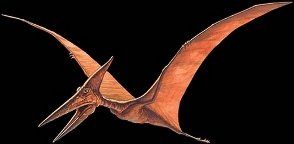

HISTORICAL SIGHTINGS:
Such reports should not surprise us as several ancient historians reported that they had seen flying reptiles. For some strange reason we are more prone to listen to the testimony of ancient historians than we are to give credence to the reports of our peers. Perhaps we are skeptical because there are so many pranksters amongst us.
HERODOTUS:
The will-known and respected Greek explorer, Herodotus, describe small flying reptiles in ancient Egypt and Arabia. Herodotus reported that the creatures had a snake-like body and bat-like wings. He recorded that he saw a canyon with many piles of their backbones and ribs. He also wrote that the strange creatures could sometimes be found in the spice groves, and that when workers wanted to gather frankincense they would have to make fires with odorous smoke to drive the pesky reptiles away.
ARISTOTLE:
This well-respected Greek philosopher also reported that flying serpents were commonly seen in Ethiopia. History is filled with claims throughout the centuries of “dragons and monsters.” Are they just fables and tales? We would recommend a book by Paul S. Taylor entitled “The Great Dinosaur Mystery.”
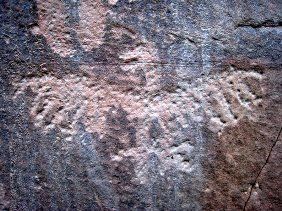
Centuries-Old Legends: The legends of the Thunderbirds reach back hundreds of years as part of the mythology of several Native American tribes of the Pacific Northwest and the Great Lakes region. And the legend might have remained strictly a part of those cultures had not the great winged creature been seen countless times by the “white man” over the centuries.
Did they really live 100 million years ago? Is it possible some of them still exist today?
There have been many modern-day sightings of creatures that by eyewitness description sound like pterosaurs. There are also intriguing rock carvings and even photographs that suggest that this species of amazing flying monsters could have survived extinction, could have soared through the skies of the southwestern United States until very recently, and might still exist in small numbers in remote parts of the world.
Pterosaurs were not dinosaurs, but a family of large flying reptiles (“pterosaur” means “winged lizard”) that includes the pterodactyl and pteranodon. The pterosaur stood on two rather spindly legs and had wings composed of a leathery membrane that stretched from the animal’s extremely long fourth finger to its body. Despite their appearance, they were not related to birds (as dinosaurs are theorized to be) and were highly successful flyers that might have dined on fish and insects.
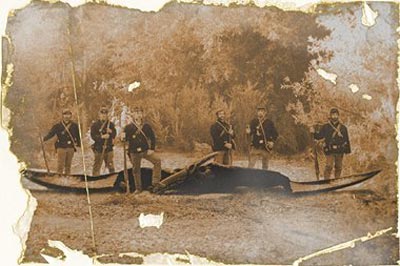
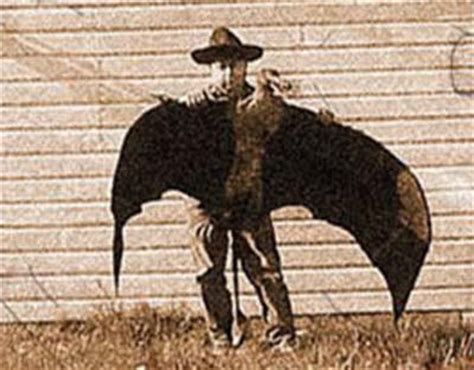
More Modern Sightings
Numerous photos were supposedly taken during the time of the Civil War . . . are these picture for real or altered? The pictures are very interesting, but remember, they may not be the best “evidence” of anything!
Although there seems to be no hard evidence that pterosaurs did not die out millions of years ago – no pterosaurs have ever been captured and no bodies have ever been found. Nonetheless, reports of sightings have persisted. Stories of flying reptiles have been recorded for many hundreds of years. Some think that tales of the “mythical” dragons in the lore of many cultures around the could be attributed to the sighting of pterosaurs. Here are some more modern accounts:
May, 1961, New York State: A businessman flying his private plane over the Hudson River Valley claimed that he was “buzzed” by a large flying creature that he said “looked more like a pterodactyl out of the prehistoric ages.”
Early 1960s, California: A couple driving through Trinity National Forest reported seeing the silhouette of a giant “bird” that they estimated to have a wingspan of 14 feet. They later described it as resembling a pterodactyl.
January, 1976, Harlingen, Texas: Jackie Davis (14) and Tracey Lawson (11) reported seeing a “bird” on the ground that stood five feet tall, was dark in color with a bald head and a face like a gorilla’s with a sharp, six-inch-long beak. A subsequent investigation by their parents uncovered tracks that had three toes and were eight inches across.
February, 1976, San Antonio, Texas: Three elementary school teachers saw what they described as a pterodactyl swooping low over their cars as they drove. They said its wingspan was between 15 to 20 feet. One of the teachers commented that it glided through the air on huge, bony wings – like a bat’s.
September, 1982, Los Fresnos, Texas: An ambulance driver named James Thompson was stopped while driving on Highway 100 by his sighting of a “large birdlike object” flying low over the area. He described it as black or grayish with a rough texture, but no feathers. It had a five to six-foot wingspan, a hump on the back of its head, and almost no neck at all. After consulting some books to identify the creature, he decided it most looked like a pterosaur.
Africa’s Kongamato: While other reports of pterosaur-like creatures have come out of Arizona, Mexico and Crete, it is out of central Africa that some of the most interesting reports have come. While traveling though Zambia in 1923, Frank H. Melland collected reports from natives of an aggressive flying reptile they called kongamoto, which means “overwhelmer of boats.” The natives, who were occasionally tormented by these creatures, described them as being featherless with smooth skin, having a beak full of teeth and a wingspan of between four and seven feet. When shown illustrations of pterosaurs, Melland reported, “every native present immediately and unhesitatingly picked out and identified it as a kongamato.”
In 1925, a native man was allegedly attacked by a creature that he identified as a pterosaur. This occurred near a swamp in Rhodesia (now Zambia) where the man suffered a large wound in his chest that he said was caused by the monster’s long beak.
In the late 1980s, noted cryptozoologist Roy Mackal led an expedition into Namibia from which he had heard reports of a prehistoric-looking creature with a wingspan of up to 30 feet.
©2006 Discovery News
There are numerous reports of modern-day sightings of strange flying creatures that resemble the flying reptiles known as pterosaurs. These reports are substantiated by the reports of ancient historians like Aristotle and Herodotus who claimed to have seen flying reptiles in their days!
